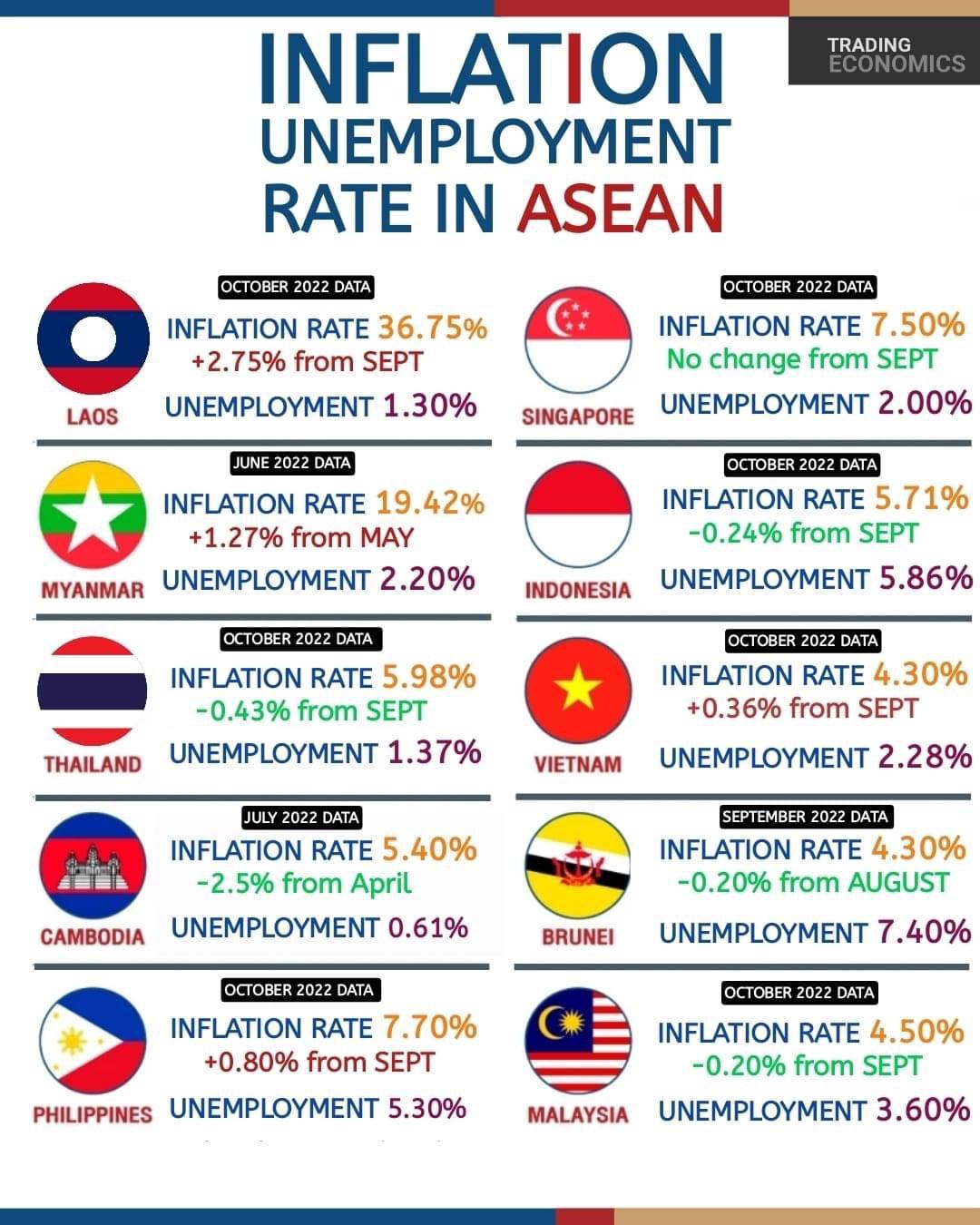Inflation And Unemployment: A Double Threat To Economic Stability And Certainty

Table of Contents
Understanding the Inflation-Unemployment Trade-off (Phillips Curve)
The relationship between inflation and unemployment has long been a central theme in macroeconomic theory. The Phillips Curve, developed in the 1950s, initially suggested an inverse relationship: lower unemployment typically correlated with higher inflation, and vice versa. This implied a trade-off – policymakers could choose a point on the curve, accepting a certain level of inflation to achieve lower unemployment, or vice versa.
However, the limitations of the simple Phillips Curve became evident, particularly during the stagflation of the 1970s (high inflation and high unemployment). This demonstrated that the relationship isn't always stable and predictable.
- Short-run vs. long-run Phillips Curve relationships: In the short run, a trade-off may exist. However, in the long run, the economy tends to gravitate towards its natural rate of unemployment, regardless of the inflation rate. Persistent inflation simply leads to higher inflationary expectations, negating any long-term unemployment benefits.
- The role of expectations in influencing inflation and unemployment: If individuals and businesses anticipate higher inflation, they will adjust their wage and price demands accordingly, leading to a self-fulfilling prophecy of higher inflation and potentially little impact on unemployment.
- Examples of historical periods demonstrating the trade-off (or lack thereof): The 1960s saw a period of low unemployment and relatively low inflation, seemingly supporting the Phillips Curve. Conversely, the 1970s' stagflation dramatically challenged the curve's simplistic assumptions.
The Impact of Inflation on Employment
High inflation erodes purchasing power. As prices rise faster than wages, consumers have less disposable income, leading to decreased consumer spending. This reduced demand can force businesses to cut back on production, ultimately resulting in job losses. Furthermore, inflation impacts businesses directly.
- Increased costs of production and their effect on employment: Rising input costs (raw materials, energy) necessitate price increases, which can further dampen demand and lead to layoffs or hiring freezes.
- Wage-price spirals and their destabilizing impact: High inflation can lead to a wage-price spiral, where workers demand higher wages to keep pace with rising prices, leading to further price increases and fueling a cycle of inflation. This creates economic instability and uncertainty.
- The impact of inflation on different sectors of the economy: Inflation doesn't impact all sectors equally. Some industries may experience increased demand (e.g., certain commodities), while others may face significant challenges due to decreased consumer spending.
The Impact of Unemployment on Inflation
Conversely, high unemployment can suppress inflation. With fewer people employed and less disposable income, aggregate demand falls, reducing pressure on prices. In extreme cases, this can even lead to deflation (a sustained decline in the general price level).
- The relationship between unemployment and wage stagnation: High unemployment weakens workers' bargaining power, leading to wage stagnation or even declines, further dampening inflationary pressures.
- The impact of unemployment on aggregate demand: Reduced consumer spending and investment due to unemployment directly lowers aggregate demand, putting downward pressure on prices.
- The potential for a deflationary spiral: Deflation can be as damaging as inflation, as consumers delay purchases anticipating further price drops, leading to reduced demand and further deflation. This creates a vicious cycle difficult to escape.
Policy Responses to Inflation and Unemployment
Governments and central banks employ various policy tools to manage inflation and unemployment. Monetary policy, primarily controlled by central banks, involves manipulating interest rates and money supply. Fiscal policy, managed by the government, utilizes taxation and government spending.
- Monetary policy tools (interest rate adjustments, quantitative easing) used to combat inflation and their potential impact on unemployment: Raising interest rates cools down the economy, reducing inflation but potentially leading to higher unemployment. Quantitative easing (injecting money into the economy) can stimulate growth but may also fuel inflation.
- Fiscal policy tools (government spending, taxation) used to stimulate employment and their potential impact on inflation: Government spending on infrastructure projects or social programs can boost employment but may also increase inflation if it leads to excessive demand. Tax cuts can stimulate the economy but may also increase inflationary pressures.
- The challenges of balancing inflation and unemployment targets: Policymakers face the difficult task of finding the right balance. Aggressive actions to combat one problem may exacerbate the other, requiring careful consideration and potentially difficult trade-offs. The role of central banks in managing the economy is paramount in this delicate balancing act. Examples of successful (and unsuccessful) policy responses throughout history provide valuable lessons and inform current strategies.
Protecting Yourself from the Impacts of Inflation and Unemployment
Individuals and businesses can take proactive steps to mitigate the risks associated with inflation and unemployment:
- Diversification of investment portfolios: Spreading investments across different asset classes can help to reduce risk and protect against inflation.
- Developing strong financial planning strategies: Creating a budget, building an emergency fund, and paying down debt are crucial steps in preparing for economic uncertainty.
- Upskilling and reskilling to enhance job security: Investing in education and training can improve job prospects and reduce vulnerability to unemployment.
- Strategies for businesses to navigate economic uncertainty: Businesses should focus on cost efficiency, diversification of revenue streams, and agile adaptation to changing market conditions.
Navigating the Challenges of Inflation and Unemployment
In conclusion, inflation and unemployment are deeply interconnected forces that significantly impact economic stability and certainty. Understanding their dynamics is essential for both policymakers and individuals. The historical relationship, as exemplified by the Phillips Curve, while offering initial insights, reveals complexities and limitations in predicting and managing these economic factors. The impact of both on individual financial well-being and business strategies necessitates proactive planning and adaptation. To navigate these challenges effectively, it's crucial to stay informed about the latest economic developments and to develop comprehensive strategies for managing your finances and career during times of economic uncertainty. Learn more about managing inflation and unemployment, develop effective inflation and unemployment strategies, and stay updated on the inflation and unemployment economic outlook to safeguard your future.

Featured Posts
-
 Foreign Office Urgent Warning 4 Problems Facing Brits In Greece
May 30, 2025
Foreign Office Urgent Warning 4 Problems Facing Brits In Greece
May 30, 2025 -
 Rajinikanth Honours Ilaiyaraajas London Symphony Success
May 30, 2025
Rajinikanth Honours Ilaiyaraajas London Symphony Success
May 30, 2025 -
 Air Jordan Release Dates May 2025 Your Sneaker Shopping Guide
May 30, 2025
Air Jordan Release Dates May 2025 Your Sneaker Shopping Guide
May 30, 2025 -
 Gorillazs House Of Kong A 25th Anniversary Retrospective
May 30, 2025
Gorillazs House Of Kong A 25th Anniversary Retrospective
May 30, 2025 -
 Will Bruno Fernandes Leave Manchester United For Real Madrid Transfer Rumours
May 30, 2025
Will Bruno Fernandes Leave Manchester United For Real Madrid Transfer Rumours
May 30, 2025
Latest Posts
-
 Impact Of Canadian Wildfires On Minnesotas Air Quality
May 31, 2025
Impact Of Canadian Wildfires On Minnesotas Air Quality
May 31, 2025 -
 Canadian Wildfires A Public Health Threat To Minnesota
May 31, 2025
Canadian Wildfires A Public Health Threat To Minnesota
May 31, 2025 -
 Minnesota Suffers From Degraded Air Quality Canadian Wildfires To Blame
May 31, 2025
Minnesota Suffers From Degraded Air Quality Canadian Wildfires To Blame
May 31, 2025 -
 Poor Air Quality In Minnesota Due To Canadian Wildfires
May 31, 2025
Poor Air Quality In Minnesota Due To Canadian Wildfires
May 31, 2025 -
 Canadian Wildfires Send Dangerous Smoke To Minnesota
May 31, 2025
Canadian Wildfires Send Dangerous Smoke To Minnesota
May 31, 2025
